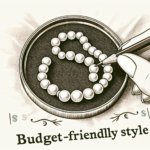Are you tired of dealing with dull, lifeless hair? Look no further! In this article, we will guide you through the best haircare routine that will give your hair the love and attention it deserves. From nourishing shampoos to deep conditioning treatments, we have got you covered. Discover the secrets to achieving luscious, healthy hair that will have everyone turning heads. Say goodbye to bad hair days and hello to your best hair yet!
The Importance of a Haircare Routine
Maintaining healthy hair requires more than just washing and styling it occasionally. A haircare routine is crucial in ensuring that your locks stay strong, vibrant, and free from damage. By implementing a consistent haircare regime, you can enjoy long-term benefits and keep your hair looking its best.
Daily Haircare Basics
Importance of Routine Brushing and Combing
Brushing and combing your hair daily not only helps to detangle it but also stimulates blood circulation in the scalp, promoting healthy hair growth. A good quality brush or comb made from natural bristles is recommended to minimize damage. Start by gently brushing the ends of your hair and gradually work your way up to the roots. This will help distribute natural oils from your scalp to the lengths of your hair.
Choosing the Right Hair Accessories
Using the right hair accessories can make a significant difference in maintaining the health of your hair. Avoid tight rubber bands or metal clips that can cause breakage and choose hair ties made from fabric or silicone instead. Additionally, satin or silk scrunchies and pillowcases can minimize friction, reducing the chances of hair damage and frizz.
How to Properly Wash and Dry Your Hair
Properly washing and drying your hair is essential for maintaining its health. Start by wetting your hair thoroughly before applying shampoo. Use a gentle shampoo suitable for your hair type and massage it into your scalp using your fingertips, not your nails. Rinse thoroughly, and apply conditioner to the lengths of your hair, avoiding the scalp. Leave it on for a few minutes before rinsing. When drying your hair, opt for air drying whenever possible or use a low heat setting on your blow dryer to minimize heat damage.
Suitable Hair Product Selection
The Role of Shampoo in Hair Health
Shampoo plays a crucial role in maintaining the health of your hair. It cleanses the scalp, removes excess oil and dirt, and ensures a clean foundation for optimal hair growth. Choose a shampoo that suits your specific hair type, whether it’s for dry, oily, or damaged hair. Additionally, consider switching to sulfate-free shampoos, as sulfates can strip the hair of its natural oils, leading to dryness and damage.
The Importance of Conditioner and How to Use It
Conditioner helps to replenish moisture, nourish the hair, and prevent breakage and split ends. After shampooing, apply conditioner to the lengths and ends of your hair, avoiding the scalp. Leave the conditioner on for a few minutes to allow it to penetrate the hair shaft before rinsing thoroughly. Using a deep conditioning treatment once a week can provide extra nourishment and hydration, particularly for dry or damaged hair.
Serums, Oils, and Leave-in Conditioners – When and Why to Use Them
Serums, oils, and leave-in conditioners offer additional benefits to enhance the health of your hair. These products provide extra moisture, combat frizz, protect against heat damage, and add shine and softness. Use a serum or oil on damp hair before styling to seal in moisture, and apply a leave-in conditioner to the ends of your hair to protect and nourish them throughout the day.
Addressing Unique Hair Needs
Haircare for Dry Hair
If you have dry hair, it’s essential to focus on hydration and moisturization. Use a moisturizing shampoo and conditioner specifically designed for dry hair to provide extra nourishment. Avoid excessive heat styling, as this can further dehydrate your hair. Incorporate deep conditioning treatments into your weekly routine to replenish moisture and enhance the overall health of your hair.
Routine for Oily Hair
For those with oily hair, it’s crucial to balance oil production without stripping the hair of its natural oils. Use a clarifying shampoo to remove excess oil and buildup from the scalp, but be mindful not to overwash, as this can lead to increased oil production. Avoid heavy conditioners and instead opt for lightweight, oil-free options. Dry shampoo can also be a handy tool to absorb excess oil between washes.
Tips for Managing Split Ends and Breakage
Split ends and breakage are common hair concerns that can be effectively managed with proper care. Regular trims every 6-8 weeks help prevent split ends from traveling up the hair shaft and maintain the overall health of your hair. Avoid excessive heat styling and use heat protectant products when using hot tools. Additionally, incorporating protein treatments into your routine can strengthen the hair, reducing breakage and promoting overall hair health.
Incorporating Weekly Hair Treatments
Deep Conditioning Treatments
Deep conditioning treatments provide intensive nourishment and hydration to your hair. These treatments are especially beneficial for dry, damaged, or chemically treated hair. Apply a deep conditioning mask or treatment to damp hair and leave it on for the recommended time before rinsing thoroughly. Incorporating this weekly treatment into your haircare routine will leave your locks feeling soft, healthy, and revitalized.
Hair Masks for Rejuvenation
Hair masks are a great way to pamper your hair and address specific concerns, such as frizz, lack of shine, or dullness. Choose a hair mask that targets your specific needs and apply it to clean, damp hair. Leave it on for the recommended time before rinsing thoroughly. Regular use of hair masks can improve the overall health and appearance of your hair.
Protein Treatments and Their Benefits
Protein treatments help strengthen the hair by replenishing its natural protein, keratin. These treatments are particularly beneficial for damaged or weak hair. Apply a protein treatment to clean, damp hair and leave it on for the recommended time before rinsing thoroughly. Incorporating protein treatments into your routine can help to reduce breakage, repair damage, and improve the overall strength and resilience of your hair.
Nutrition for Healthier Hair
Essential Vitamins and Minerals for Hair Growth
Proper nutrition plays a significant role in maintaining healthy hair. Essential vitamins and minerals, such as vitamin A, vitamin E, biotin, and iron, support hair growth and overall hair health. Incorporate a balanced diet that includes foods rich in these nutrients, or consider taking supplements under the guidance of a healthcare professional.
Foods That Support Hair Health
Certain foods are known to promote hair health due to their nutrient content. Include foods such as fatty fish, nuts and seeds, leafy greens, eggs, and fruits in your diet. These foods provide essential nutrients, antioxidants, and healthy fats that nourish the hair from within, resulting in strong, shiny locks.
The Impact of Hydration on Hair
Proper hydration is not only vital for overall health but also for maintaining healthy hair. Drink an adequate amount of water daily to keep your body and hair hydrated. Hydration helps to flush out toxins, promotes a healthy scalp, and keeps the hair well-moisturized, leading to improved hair growth and vitality.
The Role of Regular Haircuts
How Regular Trims Promote Hair Health
Regular trims are essential for maintaining the health and appearance of your hair. Getting rid of split ends and preventing them from traveling up the hair shaft can help prevent further damage and breakage. Trimming your hair every 6-8 weeks ensures that your locks stay healthy, manageable, and free from split ends.
Choosing the Right Stylist
Finding a skilled and experienced hairstylist is crucial for achieving the best results from your haircuts. Look for a stylist who understands your hair type and desired outcome. Communication is key, so be sure to discuss your preferences and any concerns you may have before proceeding with the haircut.
When and How Often to Get a Haircut
The frequency of haircuts can vary depending on your hair type, length, and desired style. As a general guideline, aim to trim your hair every 6-8 weeks to maintain its health and shape. However, if you are growing out your hair or have specific hair concerns, consult with your stylist to determine the most suitable timeframe between haircuts.
Protecting Hair from Heat and Chemical Damage
The Impact of Heat Styling on Hair
Excessive heat styling can cause significant damage to your hair, including dryness, breakage, and frizz. Limit the use of hot tools such as flat irons, curling irons, and blow dryers, and always apply a heat protectant before styling. Opt for heat-free styling techniques whenever possible, such as air drying or using alternative styling methods like braids or twists.
Safe Use of Heat Styling Tools
When using heat styling tools, it’s important to use them safely to minimize damage to your hair. Set the temperature to a moderate heat, avoiding the highest settings that can cause excessive heat exposure. Divide your hair into sections and use the tool in a smooth, continuous motion, avoiding holding it in one place for too long. Limit the frequency of heat styling to avoid overexposing your hair to heat.
Tips for Avoiding Chemical Damage
Chemical treatments, such as perming, relaxing, or coloring, can cause damage to the hair if not done correctly or if the hair is not adequately cared for afterward. It’s crucial to consult with a professional hairstylist before undergoing any chemical treatments to assess the compatibility with your hair type and condition. Follow their instructions for aftercare, including the use of specialized shampoos and conditioners to maintain the health of your hair post-treatment.
Getting Enough Nightly Sleep
Explain How Sleep Contributes to Hair Health
Quality sleep is essential for overall health, including the health of your hair. During sleep, your body regenerates and repairs damaged cells, including those in your hair follicles. Sufficient sleep promotes a healthy scalp, optimal blood circulation, and proper hormone balance, all of which contribute to healthy hair growth.
Tips for Better Sleep Hygiene
To ensure you get enough sleep to support hair health, establish a consistent sleep routine. Create a calm and comfortable sleep environment, free from distractions and electronic devices. Avoid consuming caffeine or heavy meals close to bedtime, as these can interfere with your sleep quality. Practicing relaxation techniques, such as meditation or deep breathing, can also help prepare your body for a restful night’s sleep.
Protecting Your Hair While Sleeping
To prevent damage to your hair while sleeping, consider using a satin or silk pillowcase or wrapping your hair in a silk scarf or bonnet. These materials create less friction and reduce the chances of hair breakage and frizz. Additionally, loosely braid or tie your hair in a loose bun to minimize tangles and knots.
Exercise and Hair Health
Understanding the Link Between Exercise and Hair Health
Regular exercise not only benefits your overall health but also positively affects your hair. Exercise promotes better blood circulation, delivering oxygen and nutrients to the hair follicles, which can enhance hair growth. Additionally, exercise helps reduce stress levels, which can have a positive impact on hair health and minimize hair loss.
Choosing Hair-Friendly Workout Routines
When engaging in physical activity, it’s important to choose hair-friendly workout routines that protect your hair from damage. Opt for low-impact exercises that minimize excessive sweating, as sweat can cause scalp irritation and lead to hair problems. Additionally, consider tying your hair up in a loose ponytail or braid to keep it away from your face and minimize friction.
Caring for Your Hair Post-Exercise
After exercising, it’s important to care for your hair to prevent damage and maintain its health. Rinse your hair with water to remove sweat and impurities and use a gentle shampoo if necessary. Avoid excessive rubbing with a towel and opt for patting or air drying instead. If your hair needs extra moisture, apply a small amount of leave-in conditioner or oil to the ends to nourish and protect them.
In conclusion, establishing a comprehensive haircare routine is essential for maintaining healthy, vibrant hair. By incorporating daily care practices, choosing suitable hair products, addressing unique hair needs, incorporating weekly treatments, maintaining a balanced diet, getting regular haircuts, protecting hair from heat and chemical damage, prioritizing sleep, and embracing exercise, you can achieve the best hair health possible. Remember, consistency and proper care are key to achieving and maintaining beautiful, healthy hair.



